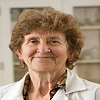Day 1 :
Keynote Forum
Elizabeth Jeffery
professor of Nutritional Pharmacology
Keynote: Today’s rising health care issue, non-alcoholic fatty liver disease, may be prevented by dietary broccoli or a number of broccoli replacements that trigger the same pathway
Time : 10:00-10:45

Biography:
Dr. Jeffery completed her PhD in biochemistry at the Royal Free Hospital School of Medicine, University of London, UK in 1972. She joined the University of Illinois as faculty in 1983 and became a full professor of Nutritional Pharmacology in both the Department of Food Science and Human Nutrition and in the Medical School
(Pharmacology faculty) in 2000. She has over 150 publications, many in the area of broccoli and health. She received the American Society for Horticultural Science’s paper of the year in 2002 and the American Society of Nutrition’s Dannon Institute award for mentorship in 2016. As Professor Emerita, she continues to have students and an active laboratory.
Abstract:
The high-fat, high-sugar ‘Westernized’ diet that is popular worldwide is associated with increased body fat accumulation,
which is related to development of Non Alcoholic Fatty Liver disease (NAFLD). Without treatment, NAFLD supports chronic
inflammation and may progress to Hepatocellular Carcinoma (HCC), a cancer with a high mortality rate. Diabetes and metabolic
syndrome are also supported by increased NAFLD. Epidemiologic studies show that incorporating brassica vegetables into the
daily diet lowers the risk of several cancers, although this is the first study to evaluate HCC prevention through dietary broccoli.
We evaluated the impact of dietary broccoli on hepatic lipid metabolism and progression of NAFLD to HCC. Adult 5-wk-old male B6C3F1 mice received a control diet (AIN-93M) or a Western diet (high in lard and sucrose, 19% and 31%, wt:wt, respectively),
with or without freeze-dried broccoli (10%, wt:wt). All mice received the hepatocarcinogen diethylnitrosamine (DEN) for 6 weekly doses. Hepatic gene expression, lipidosis and tumor outcomes were analyzed 6 months later. Mice receiving broccoli exhibited lower hepatic NAFLD scores (P < 0.0001), suppressed activation of hepatic macrophages (P < 0.0001) and slowed HCC development. Our recent work reflects the impact of obesity in humans on some of these same parameters, providing strong rational for a broccoli diet to prevent the adverse physiological outcomes of obesity. In discussing mechanism, alternative dietary bioactive compounds that are expected to act similarly will considered.
Keynote Forum
Showkat Hussain Tali
Keynote: Effect of feeding schedule on time to reach full feeds in neonates weighing 500 to 1500 grams: A randomized trial Effect of feeding schedule on time to reach full feeds in neonates weighing 500 to 1500 grams: A randomized trial
Time : 10:45-11:30

Biography:
Showkat Hussain Tali is a Consultant Pediatrics and Neonatologist, Health Services Kashmir, India. After obtaining his Bachelor's degree in 2005, he obtained his MD in Pediatric Medicine from University of Kashmir in 2010 and became Board Certified in Neonatology from the National Board of India in 2016. In the same year he joined Adesh University as Assistant Professor in Pediatrics and in charge of Neonatology. In November 2017, he joined Health services Kashmir as Consultant Pediatrics. He has 20 publications mostly in international journals. He has received many awards including Science Talent Search Award (1997), Creative Writing Award (2006) and Official Spot light Certificate by EET CRS at New Delhi (2017). On May 26/2017, he presented speech in International Congress of Gynecology and Obstetrics, Prague,
Czech Republic. In September 2017 he presented his research paper and a poster at Los Angeles, California, USA at 14th World Pediatric and Neonatal Care conference. He also moderated at 14th World Pediatric and Neonatal care conference USA and Co-Chaired a session. In September 2017, he presented his scientific paper at 7th
International Arab Neonatal Care Conference, Dubai, UAE and got first place prize for his presentation. He is a scientific committee member to Izmir Katip Celebi University Turkey for International Healthy Growing Kids Congress to be held in December 2018. He is also Editorial Board Member of Archives of Pediatrics and Neonatology, an international journal.
Abstract:
Aim: To compare the effect of 3-hourly (3-h) versus 2-hourly (2-h) feeding schedules on time to reach full feeds in neonates weighing
less than 1500 grams.
Materials & Methods: This was a randomized trial conducted in a level 3 neonatal intensive care unit, Surya Children’s Hospital,
Mumbai, India. We enrolled 120 preterm neonates with birth weights of 501 to 1500 g. The neonates were divided into 2 strata
based on birth weight: 501 to 1000 g and 1001 to 1500 g. The neonates were randomized into 2 orogastric feeding schedules: 8 or 12 feeds (3-h or 2-h schedules, depending upon randomization) and a uniform feeding protocol was followed. Analysis was performed
using the intention-to-treat principle. Categorical variables were compared using the Chi-square test. Continuous measures between
groups were compared using 2-sample t test or Mann Whitney U test as appropriate. Data were analyzed using IBM SPSS version 21
software. P<0.05 was considered significant. Primary outcome measures were time (in days) to reach full feeds (defined as tolerance of 150 mL/kg/d of feeds for at least 48 h). Secondary outcome measures were time (in days) to attain birth weight; time (in days) to discharge; weight, length and head circumference at discharge; incidence of feed intolerance, Necrotizing Enterocolitis (NEC), intravascular hemorrhage (IVH), screen-positive sepsis, culture-positive sepsis, hypoglycemia, apnea, jaundice and Retinopathy of Prematurity (ROP), duration of total Parental Nutrition (TPN) and nursing and mortality.
Results: A total of 215 neonates were assessed for eligibility of which 95 were excluded. Hence, 120 neonates were enrolled in the
trial. There was no significant difference in time (in days) to reach full feeds in the 2-h versus 3-h groups (9.53±4.26 v/s 9.85±5.48;
P=0.73). There was no significant difference between the 2 groups in most of the secondary outcomes. However the total time spent
per day in feeding was significantly lesser in the 3-h feeding schedule group (P=0.04). Subgroup analysis revealed that among the
neonates in the lower birth weight strata (501 to 1000 gms), those fed 2 hourly reached full feeds earlier compared with those fed
3-hourly (2-h group: 11.24±2.88 d vs. 3-h group: 14.14±4.98 d; P=0.041).
Conclusions: There was no significant difference in time to reach full feeds in all the neonates, irrespective of whether they were fed
2-h or 3-h. However, neonates < 1000 g reached full feeds earlier when fed more frequently (2-h feeding schedule).
Keynote Forum
Alexander V Olekin
Professor
Keynote: Probiotic strains of Lactococcus lactis subsp. lactis are stimulated by neuroactive biogenic amines and produce them and their precursor
Time : 11:50-12:35

Biography:
Alexander V Oleskin completed two dissertations (for the Ph. D. and the Doctor of Science Degree) at Moscow State University and was awarded the Full Professor (in Biology) title in 2013. His research focus has been on the role of biogenic amines in the interaction between the microbiota, including probiotics and the host organism.
He is currently lecturing on (i) Intercellular Interations, (ii) Microbial Neurochemicals and (iii) Decentralized Network Structures. He has published several monographs and more than one hundred papers in reputed journals and has been serving as an editorial board member of several local and international scientific journals.
Abstract:
The neuromediators epinephrine (adrenaline), dopamine and serotonin stimulate at a concentration of 1M the growth of some
strains of Lactococcus lactis subsp. lactis, a popular probiotic species that is widely used in functional food items. The growth of
the strain L. lactis subsp. lactis 194c is threefold accelerated by all the three neuromediators. Epinephrine and serotonin produced
no statistically significant effect on the growth of the other strains tested (K-205, 729 and F-116). Dopamine increased the growth
of K-205 and 729 but not of the fusion strain F-116. It is known that neuromediators accumulate in the bloodstream and in the
intestinal lumen of stressed individuals, especially if the stress is accompanied by local intestinal inflammation. Therefore, it is in a
stressed organism that the tested probiotic strains are expected to grow particularly fast. This fact is of indesputable medical interest
because probiotics including L. lactis subsp. lactis help the organism cope with stress. Using HPLC with an amperometric detector,
it was established that strains K-205 and F-116 produce submicromolar amounts of their own dopamine and of its precursor,
2,3-Dihydroxyphenylalanine (DOPA). DOPA passes the gut–blood and the blood–brain barriers. Therefore, such DOPA-producing
probiotic cultures could be applied, in the form of drugs or fermented dairy products for the purpose of improving the physical and mental health state of patients with neurological disorders including Parkinson’s disease.
